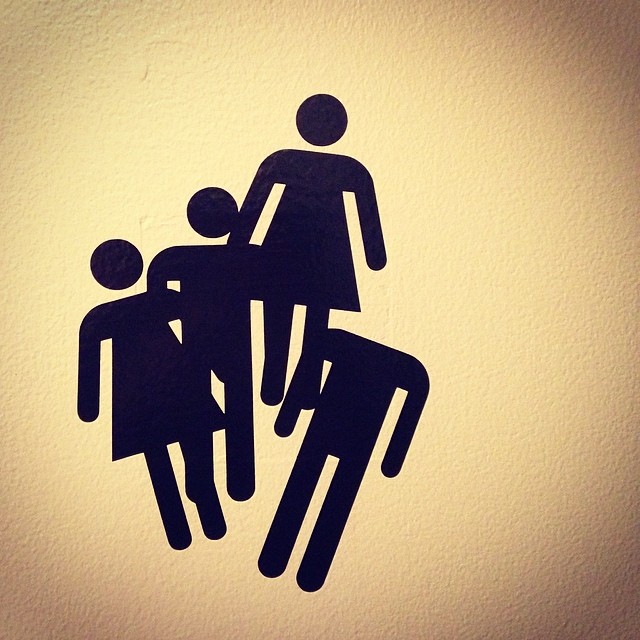The United States carries a unique debt burden relative to the rest of the developed world. Student debt has officially become the second-highest debt burden on the United States’ economy, eclipsing auto loans and credit card debt while remaining second only to mortgages.[1] This is thanks to a combination of skyrocketing tuition costs and private ownership of the cost of education, as opposed to the public ownership that exists in other countries, namely in Europe.[2] To hold the United States to a European standard makes little sense, as each is based on a different set of foundational values. Yet having such a high debt burden on a portion of the population that is statistically the least capable of efficiently repaying it has a massive negative impact on society. That could be reversed with the implementation of public ownership of the cost of education.
Education is not an entitlement by any means; it is luxury sadly taken for granted in developed states around the world. However, for many students in the United States, education is viewed as an investment necessary for starting a career, and it is not an entirely unreasonable one in the current job market. Spending up to $200,000 to earn a degree increases a person’s median weekly earnings by roughly $400, in addition to substantially increasing their chances of finding employment.[3] The additional income earned over a career makes the investment a manageable one, despite the added stress of repaying student loans after graduation. The problem, then, stems from the other impacts of the burden of the debt. A graduate’s ability to repay student loans could be hampered by uncertainty in the job market, periods of unemployment, or additional loan debt for postgraduate studies. Even in cases when an undergraduate degree is the end of a student’s education, the debt is still a substantial burden that often forces graduates to delay building their adult lives. What if they want to start a family? What if they get married and want to settle down? Being burdened by student debt can hinder graduates’ abilities to buy a house or decide that they are financially stable enough to support a child, possibly delaying those decisions by many years.
The cost of a degree is currently rising faster than inflation at a nominal 3.4% per year. It has outpaced the consumer-price index for decades, meaning that under current conditions, the cost of education will reach a point where the investment will no longer be manageable.[4] This “boiling point” will occur when the price of a degree has outpaced the average income of a graduate by so much that a degree is no longer a worthwhile investment.[5] Even before that boiling point, the negative economic consequences of such a heavy debt burden for something so essential in a competitive workforce will be apparent. Imagine a housing market collapse in the future caused by demand plummeting, with potential homebuyers overwhelmed by student debt burdens.
Misconceptions surround the conversation about the expense and scale of proposals to subsidize college education. The idea of taxpayers paying $200,000 so that an 18-year-old kid can study philosophy for four years seems like a very poor investment of public money on the surface. How big of an investment is it really? And what would the return on that investment be?
It is very difficult to determine a succinct “cost of education,” but in order to tackle an inflating student debt bubble, it would be best to look directly at the source of a majority of the debt: college tuition. The National Center for Education Statistics released a report at the end of FY 2012 that included a series of statistics on operating revenues of all Title IV institutions (institutions that qualify for federal student aid), placing the total cost of tuition at just under $62.6 billion for public institutions and $63.1 billion for private institutions.[6] When we add to these totals the average annual increase in tuition per year (a nominal 3.4% per year from 2005-2015, according to College Board),[7] the total cost of public and private tuition for 2015 becomes approximately $69.2 billion[8] and $69.8 billion respectively,[9] for an estimated grand total of $139 billion.
If a system that fully subsidized the tuitions of public universities were to be introduced, how significant would that additional $69.2 billion in taxpayer contributions be? If the United States were to develop a system to raise $69.2 billion of additional tax contributions, and do it through the simplest means possible by applying it directly to income tax brackets, the upward shift in the tax bracket would be minor. $69.2 billion, if distributed amongst the 147 million cases of individuals/married couples filing for income tax, would result in a median tax increase of $470 per filing.[10] To increase income tax by $470 per filing in the 2015 median tax bracket (single income $90,751-$189,300) would result in an approximate 2.5% shift upward. Applying that 2.5% shift to each of the IRS income brackets has the potential to pay for the new $69.2 billion in subsidies.[11][12]
If the United States were to implement this income tax hike to eliminate tuition entirely from public universities (an admittedly extreme option), that $470 would see itself back into household economies exponentially over time. Assuming that an individual is paying income tax for 45 years of their life, from age 20 to age 65, and that that rate remains constant with inflation (assuming proper legislation were passed to reel in the increase of tuition to be in line with inflation rates rather than ahead of it), their lifetime income tax contribution would increase by only $21,150 in 2015 dollars over the course of their entire career.[13] The alternative (a continuation of our current tuition system) involves a combination of students lowering their standards of living substantially after graduation to pay off loans, or families lowering their standards of living substantially to help meet the cost of college for their children, a cost that would likely be much greater than $21,150. Any potential shift of that number upwards caused by a shift in the proportion of students attending public universities rather than private universities as a result of the subsidies would be negligible. Public universities already account for roughly three-quarters of the total number of college students in the U.S., and the unique nature of private universities would prevent a complete diaspora. Additionally, the total tuition per student is much lower at a public university than a private university, lowering the required subsidy per person. The amount of students that switch to public universities from private universities would only cause a slight upward shift in the total cost of the subsidy.[14]
Within the current political climate of the United States, it is admittedly unlikely that a subsidy of 100% of public university tuition will become a reality. The U.S. does not have the same core values of public ownership and entitlement as other countries with socialized university subsidies in Europe do. Yet it is possible that a solution that is a little more feasible in the political climate of the U.S., such as a system that subsidizes ~60% of public university tuition, could be implemented as a step in the right direction. This system would only result in a minor increase in tax contributions, and the cost would be trivial when compared to the benefits of bringing the U.S. up to the standards of the rest of the developed world with regard to the value of education.
The idea of paying for the services of others is not completely unheard of in the United States. Through Social Security and Medicare, we already have shown the ability as a society to pay it forward, contributing money in the form of taxes under the impression that once we reach our retirement, that money will return to us whether we need it or not. Additionally, we already show the ability to pay it forward for services that we may never need. Americans pay taxes toward unemployment benefits and welfare programs under the impression that if the floor fell out from underneath them, those services would be there. We clearly have the ability to pay it forward, so why do we lack the ability to pay it backwards? What would be the negative impact of investing in younger generations as they prepare to enter society as adults, just as we invest in older generations as they exit the workforce?
Paying it forward follows the core concept of public money going to services that are not needed immediately by all, but by certain people at certain times of their lives. Paying it backwards works on the same core concept, but in reverse, contributing to services needed at a certain time of people’s lives (namely the formative years of their adult lives), under the impression that once those services are no longer needed post-graduation, they will then begin to contribute to subsidize the cost of education for the generations that follow them.
The politics surrounding the proposed educational subsidies would be an admittedly tricky field to navigate. Consider a 40-year-old adult who worked their way through college (back when the cost of education was reasonable) and began their career immediately after. “Why should I pay for them when I had to do it by myself?” would seem to be the logical response to this proposal. But we have established that the bubble is unsustainable, and we know that it is leaving a detrimental impact on society. At some point, some generation needs to step up. Why can’t it be ours?
The point is not one of policy, but one of scale. There are numerous ways that the issue could be solved (flat tax increase, closing tax loopholes, payroll deductions after graduation, etc.), and all of them could work if implemented properly. The important aspect is how incredibly manageable this problem is when placed within the economy of the United States, especially when contrasted with the benefits that the proposed system would serve to society.
References:
[1] Lucca, D. (2015). Staff Report – Credit Supply and the Rise in College Tuition: Evidence from the Expansion in Federal Student Aid Programs. New York, New York: New York Federal Reserve.
[2] Compare Tuition Fees Schemes in Europe. (n.d.). Retrieved November 1, 2015, from http://www.studyineurope.eu/tuition-fees
[3] Earnings and Unemployment Rates by Educational Attainment. (2015, April 2). Retrieved November 1, 2015, from http://www.bls.gov/emp/ep_chart_001.htm
[4] Average Rates of Growth of Published Charges by Decade. (n.d.). Retrieved November 1, 2015, from http://trends.collegeboard.org/content/average-rates-growth-published-charges-decade-0
[5] Lorin, J. (2014, November 13). College Tuition in the U.S. Again Rises Faster Than Inflation. Retrieved November 1, 2015, from http://www.bloomberg.com/news/articles/2014-11-13/college-tuition-in-the-u-s-again-rises-faster-than-inflation
[6] Ginder, S. (2013, December 1). Enrollment in Postsecondary Institutions, Fall 2012; Financial Statistics, Fiscal Year 2012; Graduation Rates, Selected Cohorts, 2004-09; and Employees in Postsecondary Institutions, Fall 2012. Retrieved November 1, 2015, from http://nces.ed.gov/pubs2013/2013183.pdf
[7] Average Rates of Growth of Published Charges by Decade. (n.d.). Retrieved November 1, 2015, from http://trends.collegeboard.org/content/average-rates-growth-published-charges-decade-0
[8] 69.2 = 62.6(1+0.034)^3
[9] 69.8 = 63.1(1+0.034)^3
[10] Basic Tables: Returns Filed and Sources of Income, 2013. (n.d.). Retrieved from https://www.irs.gov/uac/SOI-Tax-Stats-Individual-Income-Tax-Returns-Publication-1304-(Complete-Report)#_pt1
[11] Tax Brackets from: Phillips, K. (2014, October 30). IRS Announces 2015 Tax Brackets, Standard Deduction Amounts And More. Retrieved November 1, 2015, from http://www.forbes.com/sites/kellyphillipserb/2014/10/30/irs-announces-2015-tax-brackets-standard-deduction-amounts-and-more/
[12] 2.5 = (470/18481)*100 with 18481 being the base tax rate in the median bracket (25%)
[13] 21150=470*45
[14] College enrollment in the United States from 1965 to 2013 and projections up to 2024 for public and private colleges (in millions). (2015). Retrieved November 1, 2015, from http://www.statista.com/statistics/183995/us-college-enrollment-and-projections-in-public-and-private-institutions/



